Integrated metabolomic and transcriptomic analyses of Dendrobium chrysotoxum and D. thyrsiflorum reveal the biosynthetic pathway from gigantol to erianin
- PMID: 39391777
- PMCID: PMC11464314
- DOI: 10.3389/fpls.2024.1436560
Integrated metabolomic and transcriptomic analyses of Dendrobium chrysotoxum and D. thyrsiflorum reveal the biosynthetic pathway from gigantol to erianin
Abstract
Erianin is one of the most representative bibenzyls with significant inhibitory activity against a wide range of tumor cells. However, the low erianin level in natural materials has severely inhibited its further development in health care. Our aim was to uncover the erianin biosynthetic pathway to lay the foundation for promoting its production. Firstly, we screened and obtained two Dendrobium species (Dendrobium thyrsiflorum stems with lower erianin content and D. chrysotoxum stems with higher erianin content), belonging to the same Dendrobium section (Chrysotoxae). A systematic analysis of bibenzyl structure and content in two stems revealed that gigantol might be an erianin biosynthetic intermediate, which was verified by introducing deuterium-labeled gigantol. Chemical structure analyses indicated that gigantol was modified by two kinds of enzymes (hydroxylases and O-methyltransferases), leading to erianin synthesis. Up-regulated hydroxylases and O-methyltransferases (OMTs) were screened out and were performed by molecular docking simulation experiments. We propose a rational biosynthetic pathway from gigantol to erianin, as well as relevant enzymes involved in the process. Our findings should significantly contribute to comprehensive resolution of the erianin biosynthetic pathway, promote its large-scale industrial production as well as contribute to biosynthesis studies of other bibenzyls.
Keywords: biosynthetic pathway; dendrobium; erainin; metabolomics; transcriptomics.
Copyright © 2024 Xie, Chen, Cheng, Zhang, Ma, Zhang and Liu.
Conflict of interest statement
The authors declare that the research was conducted in the absence of any commercial or financial relationships that could be construed as a potential conflict of interest.
Figures

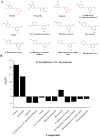
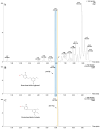
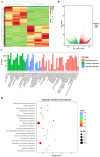
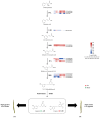

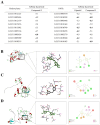

Similar articles
-
Erianin, the main active ingredient of Dendrobium chrysotoxum Lindl, inhibits precancerous lesions of gastric cancer (PLGC) through suppression of the HRAS-PI3K-AKT signaling pathway as revealed by network pharmacology and in vitro experimental verification.J Ethnopharmacol. 2021 Oct 28;279:114399. doi: 10.1016/j.jep.2021.114399. Epub 2021 Jul 8. J Ethnopharmacol. 2021. PMID: 34246740
-
Transcriptomic Analyses Shed Light on Critical Genes Associated with Bibenzyl Biosynthesis in Dendrobium officinale.Plants (Basel). 2021 Mar 26;10(4):633. doi: 10.3390/plants10040633. Plants (Basel). 2021. PMID: 33810588 Free PMC article.
-
Erianin suppresses proliferation and migration of cancer cells in a pyruvate carboxylase-dependent manner.Fitoterapia. 2022 Mar;157:105136. doi: 10.1016/j.fitote.2022.105136. Epub 2022 Jan 31. Fitoterapia. 2022. PMID: 35093481
-
Research progress on the pharmacological mechanism, in vivo metabolism and structural modification of Erianin.Biomed Pharmacother. 2024 Apr;173:116295. doi: 10.1016/j.biopha.2024.116295. Epub 2024 Feb 23. Biomed Pharmacother. 2024. PMID: 38401517 Review.
-
Recent research progress on natural small molecule bibenzyls and its derivatives in Dendrobium species.Eur J Med Chem. 2020 Oct 15;204:112530. doi: 10.1016/j.ejmech.2020.112530. Epub 2020 Jul 15. Eur J Med Chem. 2020. PMID: 32711292 Review.
References
-
- An T. N. M., Cuong N. V., Quang N. M., Thanh T. V., Alam M. J. C. (2020). Green synthesis using PEG-400 catalyst, antimicrobial activities, cytotoxicity and in silico molecular docking of new carbazole based on α-aminophosphonate. Chemistryselect 5, 6339–6349. doi: 10.1002/slct.202000855 - DOI
LinkOut - more resources
Full Text Sources

